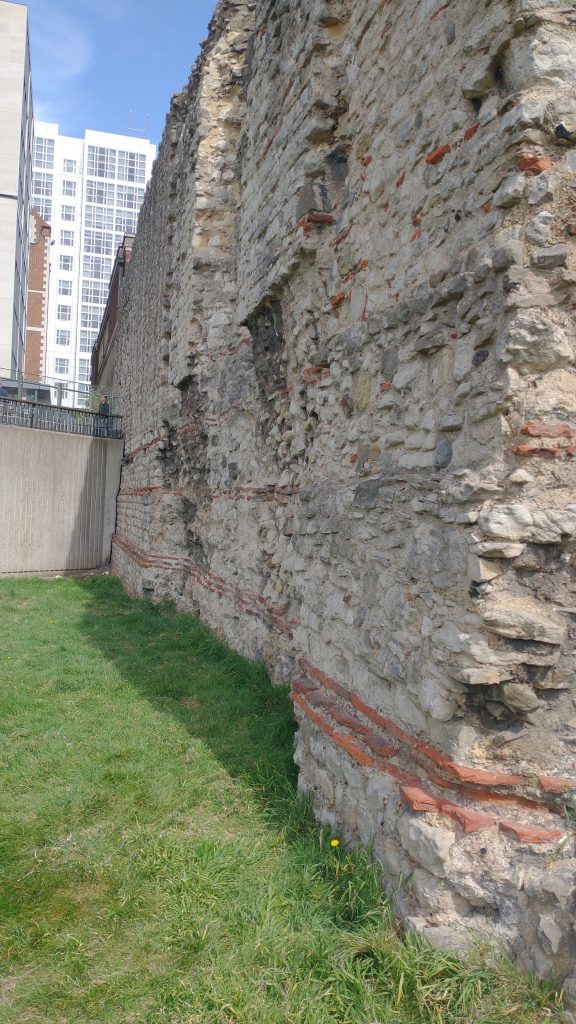
Yesterday I had a meeting with a couple of archaeologists at Tower Hill to discuss my recent letter to the London Archaeologist which suggests a piece of conservation of the wall was wrong and based on an misunderstanding of the physical remains. To my relief they agreed with my assessment of the wall and we agreed to follow it up.
It is a complex issue and I will try to upload a copy of the report at the bottom of this page. But briefly. at some point in the past the inner face of part of the wall collapsed (the piece closest to the camera). You can see that only the bottom Roman tile courses continue to the camera end of the wall – the ones above were swept away in the collapse on the inner face, they survived on the outer face.
The section just visible at the front used to show this collapse graphically because only half of the width of the tile courses survived (i.e. on the outer face not the inner face.) At some point someone in the 1980s picked up some fragments of the tile and stuck them superficially on the wall to complete the tile courses. This shows a complete lack of understanding of the archaeology of the wall and ignores the collapse. You can just see the end of that false tile course a few feet above the bottom genuine Roman tile course.
Not a great nor important bit of history but the Wall Walk plaque is wrong on this matter too so it would be good to get that changed.
Its difficult to date the original collapse but the wall at the top looks clearly medieval.
What was even more exciting is that while waiting for the archaeologists to turn up I was looking from afar at the section above. If you look very carefully at the wall nearest the camera you will see a few feet above the bottom of the wall a string of stones which are aligned to the Roman tile course and it seems that whoever recreated this section of the Roman wall after the collapse tried to copy the Roman wall but did not have any tiles so did it in stone. This part of the ‘repair’ is clearly different in style to the medieval repair above (although I had not noticed the difference in 40 years of looking at this wall).
I was very excited about this and thought maybe this is Post Roman work, because it is different to the section above which is medieval, and mimicking or continuing the Roman design the Roman. Identifying a pre-Medieval repair to the wall would be, I think, unique.
I pointed it out to Jane Sidell and Jenny Hall, and they were also interested in this finding. Jane pointed out that it seems that whoever did this seems to have been copying the Roman core of the wall just to the left, rather than copying the original Roman inner face which you can see at the end of the wall away from the camera. She thought it was more likely to have been a 19th or 20th Century repair. But we are following it up.
Here is the letter as published in London Archaeologist Vol.16 No. 2 / Autumn 2020
A longer and more extensively illustrated version is available to see here:
